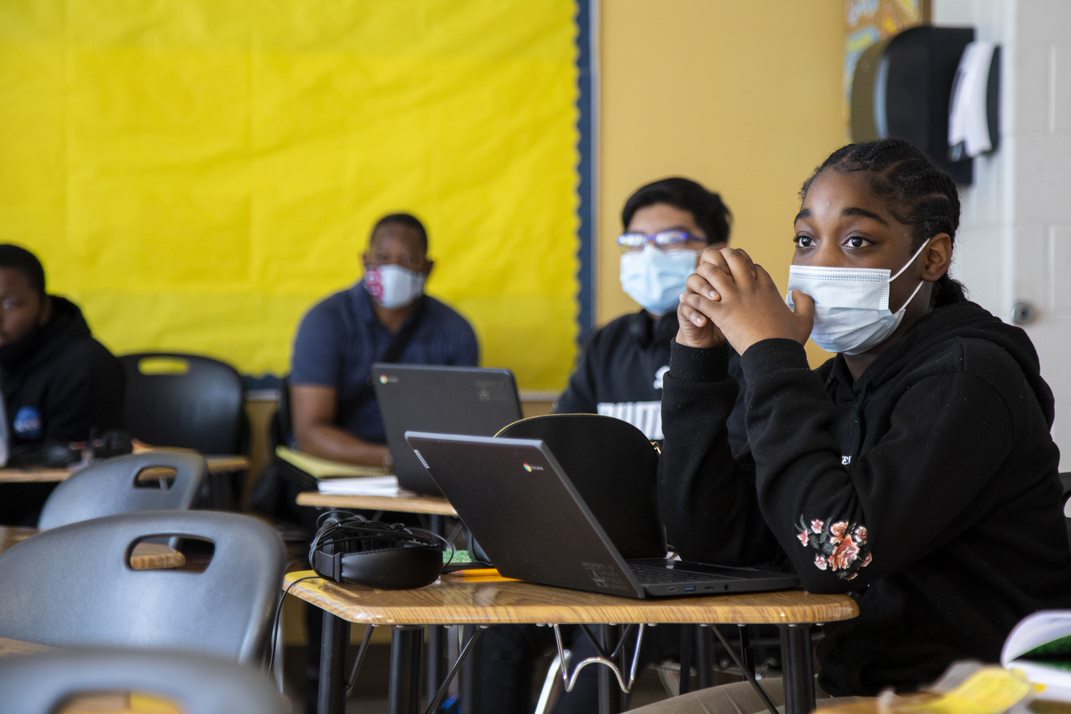Report: Atlanta Students Spent Less Time Learning Remotely, Made Fewer Gains During Pandemic

A new study from GSU found students in one metro Atlanta school district spent less time learning remotely and learned less during the pandemic.
Alphonso Whitfield / WABE
Some metro Atlanta students spent less than half their normal classroom time learning virtually during the pandemic. They also learned less according to a new analysis from Georgia State University’s Metro Atlanta Policy Lab for Education (MAPLE).
GSU researchers found students in one Atlanta district spent an average of 14 hours a week learning remotely during the fall of 2020, compared to 33 hours of classroom instruction per week pre-pandemic.
Researchers weren’t able to factor in any non-virtual face-to-face instruction for students who returned to in-person learning last fall. Higher-than-normal absentee rates, due to the pandemic, are also averaged in.
Students made fewer academic gains, says Jennifer Darling-Aduana, an assistant professor at GSU who studies equity implications of online learning and co-authored the study. But, she says, there’s also some good news.
“We did see that students were learning, the more time they spent in the virtual platform, the larger the gains were,” she says. “So that does speak to if you can ensure sufficient instructional time it’s not necessarily the medium itself, but the time and then also the tools that are being used.”
Darling-Aduana says students seemed to learn more when they used interactive programs.
“It doesn’t have to be fancy,” she says. “It can be something like Microsoft Word, that most people know how to use, but it can be a means for students to do student-generated knowledge, to reflect, to be creative all while developing writing and language skills.”
She says the researchers weren’t able to factor in any non-virtual face-to-face instruction for students who returned to in-person learning last fall. She says higher-than-normal absentee rates are also averaged in.
The study also found that female students spent more time on learning applications than male students. Black students logged more time than white students.
The Georgia Department of Education recently released 2021 Georgia Milestones scores. Overall, student performance was lower than when the standardized test was issued in 2019. However, officials have said the 2021 results shouldn’t be used as a basis of comparison, given the learning disruptions that occurred during the pandemic.
“Given the larger context of the global pandemic, and all of the family, and economic and societal challenges that arose… I absolutely would have predicted scores would have gone down,” she says. “I know that our district partners, as well as the education community more broadly, is actively working on ways to help students get those educational opportunities they may not have had access to during the pandemic.”








